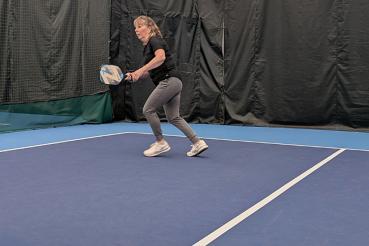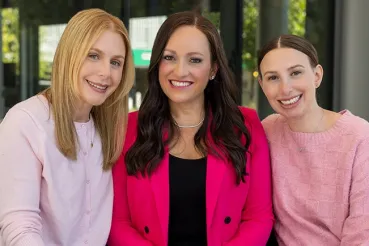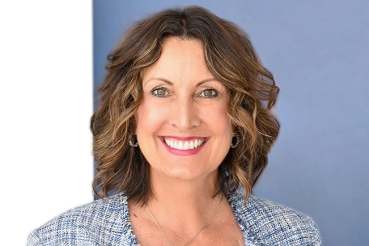Competitive cheerleading is an intense, high-energy sport requiring talent, strength and agility. Having been a gymnast for eight years, Sam Petasnick knew it was a great fit for him.
“It’s something I really like, showing my skills and being rewarded for it,” says Sam, a recent graduate of Oswego High School, which is located about 50 miles southwest of Chicago.
An injury with bad timing
Sam was practicing for both his school cheer team’s state competition and the ICU World Cheerleading Championship. Attempting a tricky tumbling stunt called a roundoff Arabian — a stunt he had performed hundreds of times before — he severely dislocated his shoulder.
Sam’s parents took him immediately to the emergency department at RUSH Copley Medical Center. “They popped my shoulder back into place and took an MRI, but it was still very sore,” Sam says.
The following day, Jonathan Tueting, MD, a RUSH shoulder, elbow and hand surgeon who practices in Aurora and Yorkville, reviewed the results with Sam.
“When performing the move, all of Sam’s weight was over his head, he landed awkwardly and sustained a locked anterior shoulder dislocation, which tore his labrum,” Tueting says, referring to the soft tissue that stabilizes the joint.
Following a winning game plan
Whether or not to treat a labral tear surgically or with therapy is a judgment call. “I don’t treat X-rays or MRIs — my diagnosis is very patient-specific and sport-specific. I look at the whole picture. I also have to consider the seriousness of the injury,” Tueting says.
In Sam’s case, the severity of the labral tear and Sam’s intention to keep participating in competitive cheerleading led Tueting to recommend surgery.
“Dr. Tueting drew me a picture to explain how the labrum works and discussed in detail how he would fix it,” Sam says. “He was to the point and didn’t sugarcoat anything.”
“Imagine your shoulder is like a golf ball on a tee,” Tueting explains. “The ball tends to want to roll off, but if the tee had a soft, rubberlike rim, it would add surface area which would help keep the ball in place. It’s the same thing with surgically rebuilding the shoulder and its surrounding labrum.”
Sam’s arthroscopic labral repair went off without a hitch. “Very easy, he did great, tolerated the surgery well,” Tueting says.
The next crucial step in Sam’s recovery was 12 to 14 weeks of therapy. Tueting understood Sam’s goal was to participate in his high school cheer team’s state competition, followed soon after by the ICU Worlds competition. But whether he had time to recover was still in question.
Sam worked through his therapy with the same tenacity he displays as an athlete, and Tueting was pleased with his results, “He progressed well, hitting all the benchmarks for range of motion, strength and stability. He showed all the grit that separates athletes who are talented from those who are talented and successful.”
Better, stronger and smarter
Once Sam completed his therapy, it was time to put his newly repaired shoulder to the test. He was anxious about “doing his skills” again, but was relieved to discover his shoulder didn’t hurt, which gave him the confidence to push himself even more.
“I was back to normal, maybe even better than before,” Sam says.
Sam’s shoulder was rehabilitated in time for him to fully participate in the state meet — with two weeks to spare. He joined his Oswego teammates in placing sixth in the IHSA Cheer State Finals. Two months later he participated with the junior national coed team to win the 2023 ICU World Cheerleading Championship in Orlando, Florida.
Sam now has set his sights on his college career at North Carolina State University, where he was recently invited to join their national championship cheer team.
Sam will take with him a valuable lesson he learned as an injured athlete. “Taking care of my body is more of a priority," he says. "I was definitely overtraining, without loosening up or icing my muscles. I know I can do the big skills, but I realize I have to take care of myself to prevent injury.”
One other aspect about his experience will likely have a huge influence on his future. “After college, I want to move on to another chapter of my life," he says. "I’ve always wanted to do something in the medical field, and this confirms it.”




